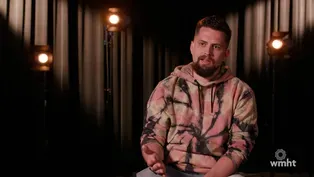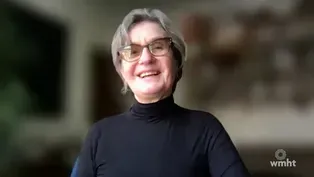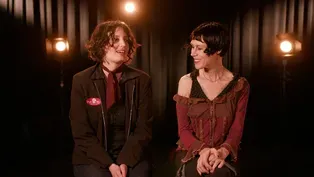TvFilm
Cameron S. Mitchell on Creating Access Using Captions & ASL
Clip: Season 15 Episode 1 | 2m 14sVideo has Closed Captions
Discover the magic of accessible films with captions, ASL, and audio descriptions.
Cameron S. Mitchell discusses the benefits of providing captioning, ASL interpretation and audio description in films. Mitchell used a service called D-PAN to create these viewing experiences for his short "ELSA."
Problems with Closed Captions? Closed Captioning Feedback
Problems with Closed Captions? Closed Captioning Feedback
TvFilm is a local public television program presented by WMHT
TVFilm is made possible by the New York State Council on the Arts with the support of the Office of the Governor and the New York State Legislature.
TvFilm
Cameron S. Mitchell on Creating Access Using Captions & ASL
Clip: Season 15 Episode 1 | 2m 14sVideo has Closed Captions
Cameron S. Mitchell discusses the benefits of providing captioning, ASL interpretation and audio description in films. Mitchell used a service called D-PAN to create these viewing experiences for his short "ELSA."
Problems with Closed Captions? Closed Captioning Feedback
How to Watch TvFilm
TvFilm is available to stream on pbs.org and the free PBS App, available on iPhone, Apple TV, Android TV, Android smartphones, Amazon Fire TV, Amazon Fire Tablet, Roku, Samsung Smart TV, and Vizio.
Providing Support for PBS.org
Learn Moreabout PBS online sponsorship(bright music) - In the making, the post-production for "Elsa," we actually had the opportunity to work with DPAN which is one of these organizations that does the captioning and ASL for videos.
And I hope more filmmakers hear about services like this because filmmaking is, it can be an accessibility tool.
It has the power to reach audiences that can't leave their homes.
You can make access in the world just by thinking about adding captions to your film and adding a version of your film that has ASL.
And so for "Elsa," DPAN actually did this really cool thing I had never seen before called extended audio description, where they took the short, and when there wasn't time to fully describe the scene they would pause it, and then the person would talk about everything that's in the image.
And it's a really interesting way to watch films because I have a sister who is blind and she watches everything with audio description.
And it's a very different way to watch things.
And I encourage everybody to turn it on on Netflix or something and just give it a try.
If you want to just kind of open up your world and experience something in a different way, that's really what disability is there for.
It's there to inform our experiences and to make us creatively engage.
Really, I see all disabled peoples like artists in some way 'cause they're all creatively navigating their own spaces.
The ASL and open captioning version of "Elsa" had, at one point, three to four times more views than the normie Elsa film that just had captioning.
And I think that says volumes about the untapped market that's out there.
One in four Americans have a disability.
It's the largest, one of the largest minorities, 20% of the population.
And so by not thinking about making your films accessible you're just cutting yourself off to a massive audience.
(bright music)
Cameron S. Mitchell on Accessible Film Sets
Video has Closed Captions
Learn how accessibility was integrated into the production design of "ELSA." (1m 59s)
Dorothea Braemer on Using Your Voice in Filmmaking
Video has Closed Captions
Dorothea Braemer believes the filmmaker's mission: connect with others & express yourself. (1m 44s)
ELSA | Lost in Time | It's Possible: Preview
Video has Closed Captions
Join our host Jermaine Wells to watch three short films on TVFilm. (23s)
Lisa Thomas and Ryder Cooley Talk Songwriting, Set Design
Video has Closed Captions
Go behind the scenes of making the music novella "Lost in Time." (2m 21s)
Providing Support for PBS.org
Learn Moreabout PBS online sponsorshipSupport for PBS provided by:
TvFilm is a local public television program presented by WMHT
TVFilm is made possible by the New York State Council on the Arts with the support of the Office of the Governor and the New York State Legislature.















